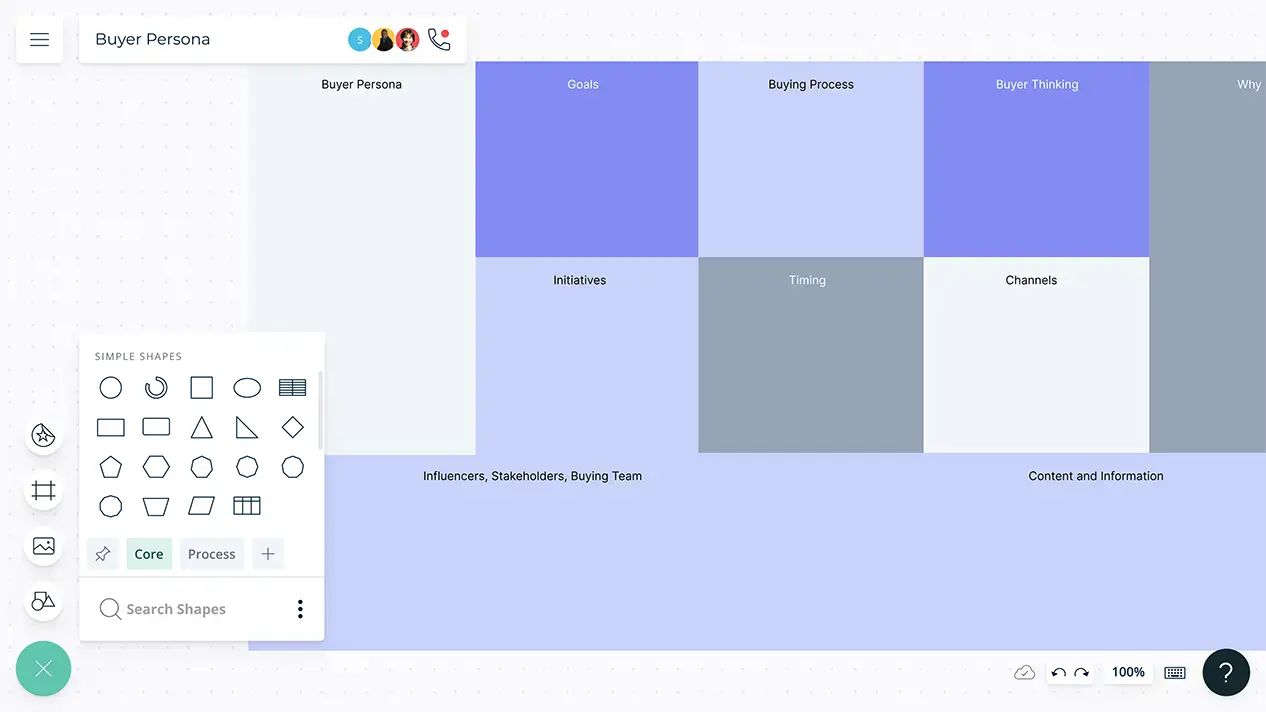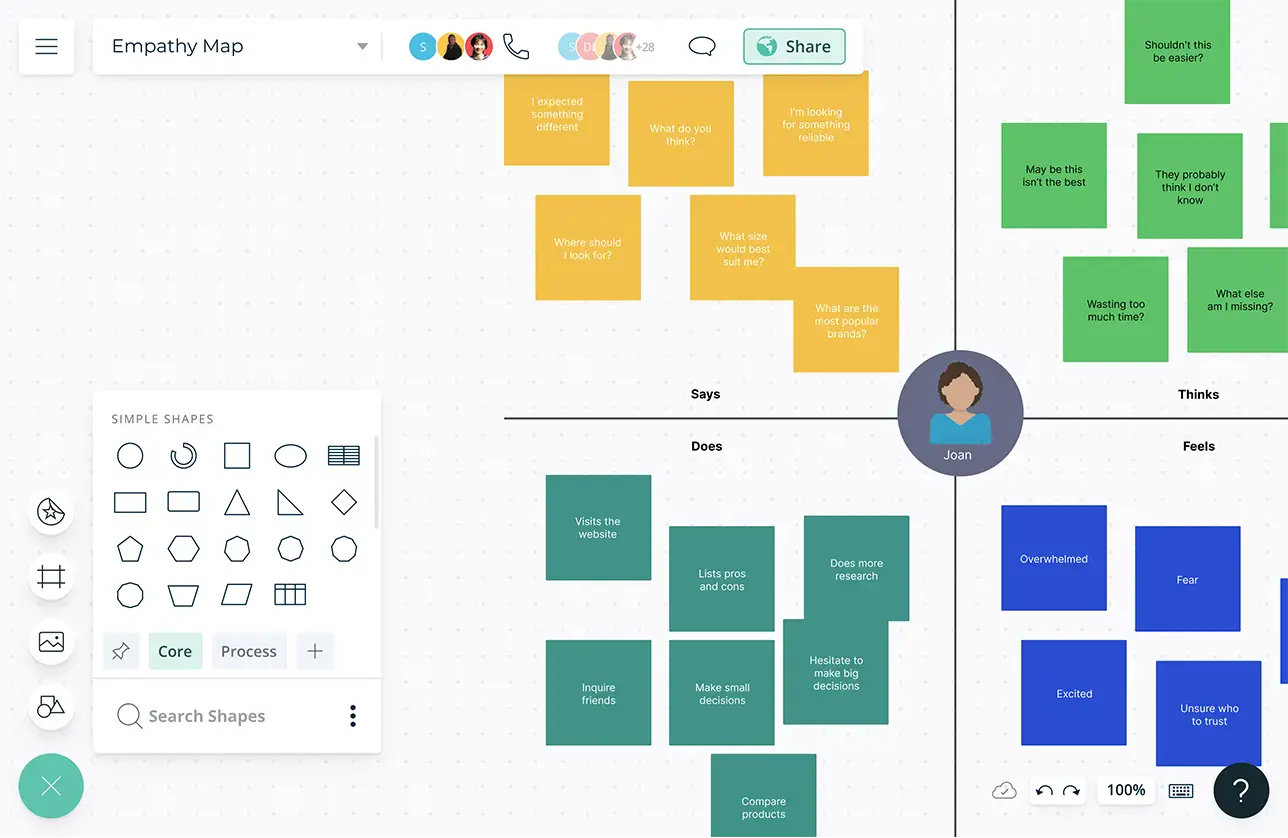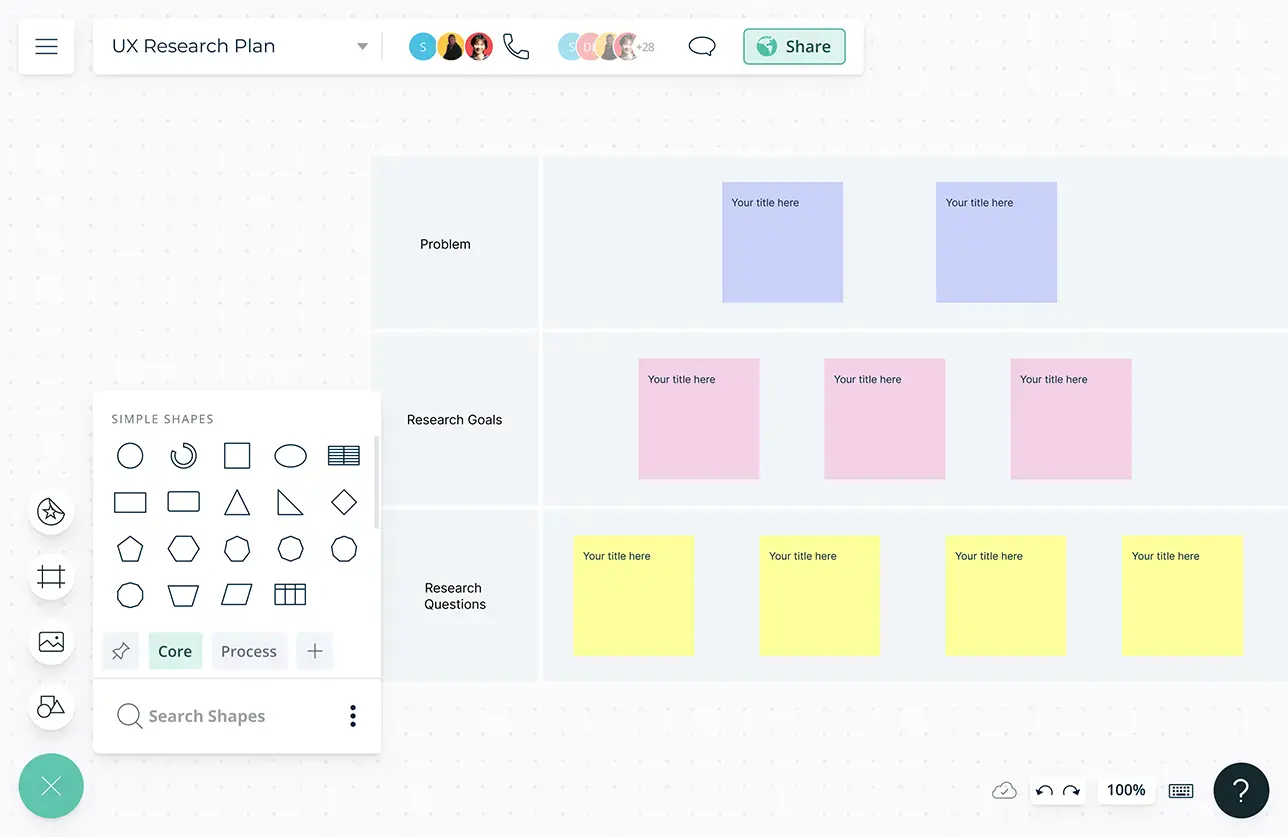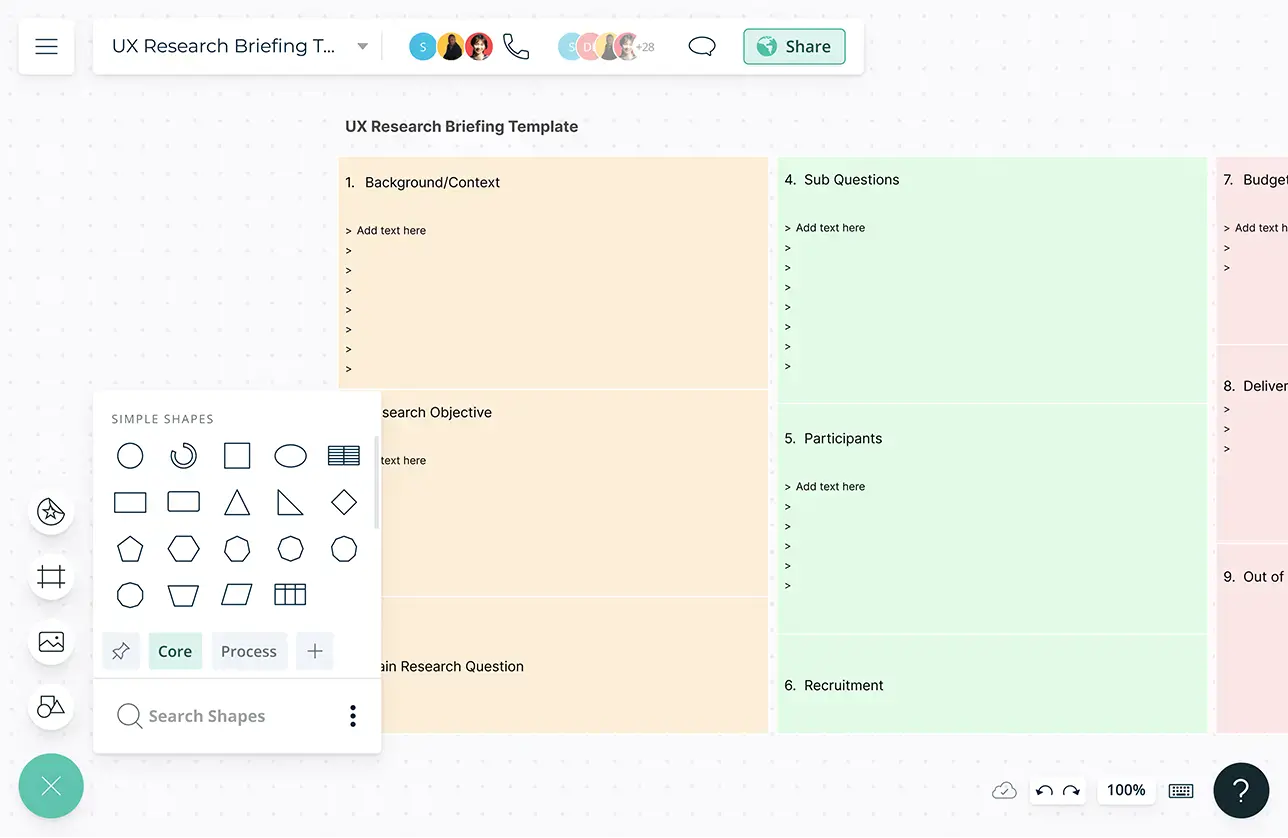UX Research Plan
Streamline Your UX Research Efforts
From ideation to release, collect actionable insights across teams to create better user experiences.
- Powerful visual tools to capture, organize, and analyze research data
- Real-time collaboration to foster stakeholder understanding & engagement
- Pre-built templates to conduct user research and analysis effectively

- Powerful visual tools to capture, organize, and analyze research data
- Real-time collaboration to foster stakeholder understanding & engagement
- Pre-built templates to conduct user research and analysis effectively


Easy-to-Use Visual Tools for Planning

Quickly get started on laying out a plan for carrying out research. Multiple pre-made templates for UX research plans to get a headstart.
Brainstorm around the problem space and analyze gaps between existing knowledge with built-in tools such as mind maps, post-it note walls, and more.
Instantly build professional-looking one-page UX research plans with simple-to-use drag and drop tools and advanced formatting capabilities.
Over 50 types of diagrams with specialized shape and icon libraries to visualize any type of data.
Transform Data into Experiences

Consolidate ideas, objectives, milestones, and deliverables together in one, accessible place with intuitive infinite canvas.
Build custom databases with flexible visual structures that can be moved and grouped anyway you like to store your research data.
Add data, notes, tasks, links, workflow statuses and more to each item on your plan with powerful shape data and documentation capabilities.
Import images and vectors to the canvas and embed documents with in-app previews to provide more context and develop a better understanding.
Built-in tools to create dynamic and interactive presentations, reports, and dashboards for stakeholders.


Bring All Stakeholders on the Same Page

Involve stakeholders in the research project and interact actively with true multi user collaboration with concurrent editing.
Built-in video conferencing and whiteboarding to work closely with the team in real-time.
Use @mention comments to tag teammates to get things done or clarify things and comment threads to have discussions and follow-ups on the same canvas.
Full version history to keep track of key points during each iteration of your planning and research. Branch out from an earlier version if needed at any time.
Multiple access levels and roles to streamline managing, sharing, editing, and reviewing your UX research plan.
From Planning to Execution on a Single Canvas

Connect to your favorite tools with Creately plugins for Github, Slack, Google Workspace, Confluence, and more to execute the experience.
Frames for Kanban boards, timelines, grids, and more to visually arrange your plans and create a view for your own working style on the canvas.
Built-in agile project management tools and integrations to popular task management platforms to keep your team work flowing.
Assign tasks to complete items in context. Link tasks to or from other project management tools seamlessly.
Set estimated times and due dates for tasks and allocate resources based on availability and skill sets.

What Is a UX Research Plan?
A UX research plan or a user research plan is a brief document that provides an overview of your project’s timeline, goals, main players, and objectives. It acts as a reference point that keeps the research team on track and focused on the objectives during the project and helps with stakeholder decision making.
How to Create a UX Research Plan with Creately?
- Open a Creately workspace and select a premade UX research plan template available in the library. Add/ invite key project stakeholders to the canvas to start populating the template.
- Fill out the background of the project detailing the reasons for conducting the research. Participants can jot down their ideas on sticky notes and add them on to the UX research plan canvas as they brainstorm.
- Then clarify the objective of the research or in other words the outcome of the research. If there are several objectives and you want to prioritize them, choose a method like dot voting or use a prioritization grid to evaluate them against metrics such as impact and effort.
- List down the participants who need to be recruited to carry out the research and identify how you are planning to recruit them.
- Select a suitable research method such as interviews, usability tests, focus groups, etc. that will help achieve the set objectives easily.
- Create an interview guide outlining the interview questions, guidelines to be followed, conclusion, etc. Here you can use Creately notes which comes with powerful formatting to document all the necessary information.
- Estimate how long it will take to complete the research project and lock in a timeline.
- Attach all necessary resources, documents, screenshots, and bring data from any other resource onto the canvas and visualize them as meaningful data shapes to build your own custom visual database.